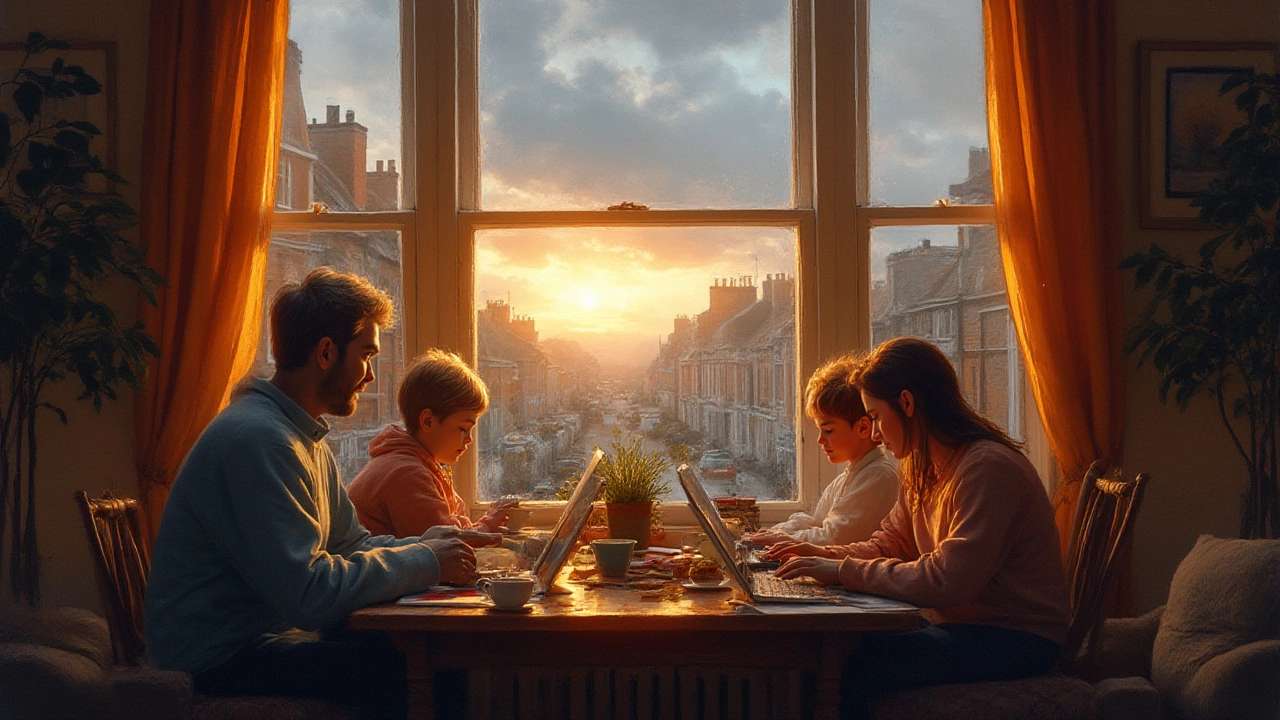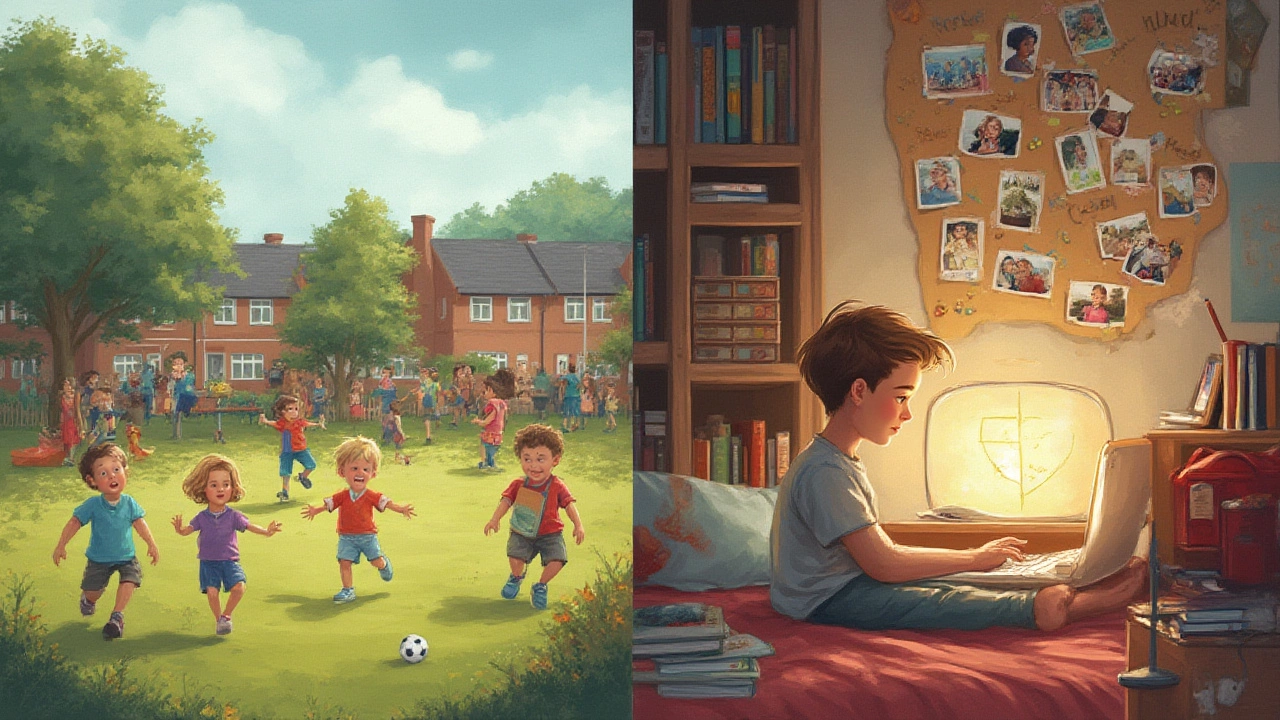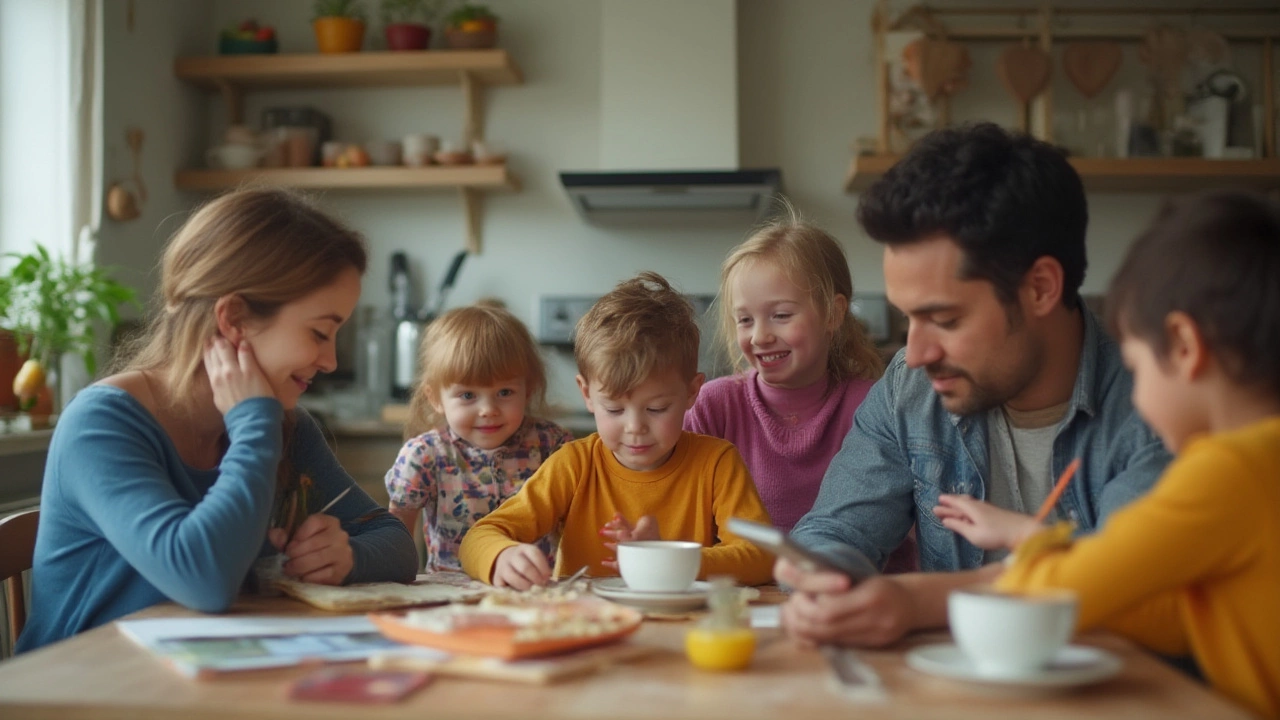-
28
- 0

Does Remote Learning Replace Traditional School? Understanding the Real Changes in Education
Picture this: your kid is at home in pajamas, munching on toast, and listening to a science lesson about Saturn's rings through a laptop speaker. It feels surreal. But is this “school”? When schools around the world switched to remote learning, a lot of people spoke about it like it was just school with a supercharged WiFi connection. Spoiler: it’s a lot more complicated than clicking ‘Join Meeting’. Not everything in education collapsed neatly onto a screen, and home became a battleground for focus, patience, and family WiFi passwords. If you’ve found yourself redefining “school” staring at a pile of Chrome books and maths worksheets next to your coffee, you’re not alone.
The Heartbeat of School: What’s Really Missing Online?
You can swap chalkboards for breakout rooms and recess for YouTube dance breaks, but let’s be honest: the rhythm of remote learning beats differently from the classic hum of a school hallway. Real school isn’t just about absorbing facts—it’s about uniforms swapped for gym shorts behind a cubby, high-fives after quiz triumphs, the smell of markers, and side glances with friends mid-lesson. These pieces matter. In online settings, a University College London report found that primary children missed, on average, 2.2 hours of learning per day compared to in-person classes during early pandemic closures. But it’s not just about lost hours.
Camaraderie, casual chats, and those life lessons you can't Google all get shortchanged. It’s no wonder the CDC reported a 31% jump in mental health-related ER visits for teens in 2020. Tech can fill many gaps, but not the all-important social glue of school. Video calls flatten conversations—no whispered jokes, no shared looks. Even the terror of being called on in front of the class gets rebranded as “can you unmute?”. Teachers say they spend up to 40% more time just checking in on wellbeing and getting students feeling seen. It’s hard to feel lost in a real classroom, but it’s all too easy to disappear on a pixelated grid.
| Aspect | Traditional School | Remote Learning |
|---|---|---|
| Social Interaction | High | Low/Moderate |
| Daily Physical Activity | Standard | Reduced |
| Teacher Oversight | Direct | Indirect |
| Flexibility | Limited | High |
| Screen Time | Low/Moderate | High |
How Remote Learning Is Actually Changing “School”
Don’t get me wrong, there’s serious magic in watching your kid master software skills before you’ve had your morning tea. Remote learning has quietly revolutionized homework, lessons, and even what counts as “attendance.” Apps like Kahoot! or Nearpod make quizzes feel like games, and teachers have gotten creative, using Minecraft to teach history and live Zoom science experiments for kitchen chemistry. Some families love that lessons happen at their child’s pace, pausing or revisiting tricky bits, and using AI tutors when mum or dad just can’t explain polynomials anymore.
But the switch to remote learning also means the focus shifts. The National Center for Education Statistics found that during 2024, 53% of U.S. schools reported students were submitting less work than the previous year. Motivation sometimes drops, and distractions multiply. Siblings, pets, and the call of snack cupboards become fierce competitors to focused learning time. It can feel less like “school” and more like “try to learn maths while your sister is practicing trumpet.”
Remote learning also asks parents to be more than just homework checkers—they become tech troubleshooters, cheerleaders, and even substitute teachers. If you’ve helped your child log onto three different learning platforms, and Googled “how to submit maths PDF”, you deserve extra credit. Some parents have had to reduce work hours, or find flexible jobs, just to help manage the digital juggle. Not everyone has the same resources. A Harvard study in 2023 showed that students in lower-income homes were up to five months behind peers due to device and internet shortages. The remote learning “school” is one story for every kid—and those stories can be wildly different even on the same street.

What Kids and Parents Say Is Gained—and Lost
Ask a handful of kids, and you’ll get answers as mixed as a box of chocolates. Some love that they don’t have to ride the bus or put on shoes; others say they miss group work and seeing friends at lunch. My own Hazel loves Chemistry but says “it’s not the same to do experiments over Zoom as when Mrs. Pearson lets us blast soda all over the science lab.” Many parents say remote learning created unexpected family time, with siblings on lunch breaks together. But it also brought guilt and burnout, especially for working parents juggling endless log-ins and “Mum, my camera’s not working!”
Here’s a tip that actually works: set up a mini “school zone” at home. Even a tray table and a shoebox for supplies help kids shift into “school mode.” Swap screens for movement every hour—Apple Watches and Fitbits agree, kids learning remotely walk fewer steps (nearly 2,000 less per day!) than when attending school. Encourage silly rituals: silly hats for spelling tests, or a quick family dance between classes. When “school” happens at home, a little intentional routine goes a long way to boost energy and focus.
Anxiety and screen-fatigue are real. The American Academy of Pediatrics recommends no more than two hours of recreational screen time for children, though remote learning pushes those limits hard. Balance lessons with creative offline breaks: beanbag reading corners, drawing time, or a scavenger hunt around your house. Some schools now offer after-class “virtual recess” rooms so kids can just chat, joke, or listen to music together, just like they would in a playground. It’s not perfect, but it’s better than nothing.
Tech Tools, Tips, and Pitfalls in Virtual Classrooms
If your family has tackled glitches, bad WiFi, or left a child stranded in a virtual waiting room, you know that “school” lives or dies by technology now. Reliable laptops and strong broadband are worth their weight in gold. One tip: plug your device directly into the router with a cable—less dropouts, better streaming. Getting a secondhand headset or investing in a simple microphone can save a world of frustration. For parents with multiple learners at home, color-coding cables or post-it notes for log-ins helps avoid chaos.
Then there’s keeping digital distractions in check. Parental control apps like Qustodio or Bark can keep Netflix off-limits during school hours and stop TikTok from luring your child away at 11 AM. Teach your kids to use simple productivity extensions: Forest, for example, turns focus time into growing a virtual tree—it’s weirdly motivating for tweens. Ask teachers for their backup plans—what happens if Zoom dies mid-lesson? Don’t be shy about asking for printed packets or recorded lessons if live video’s a struggle.
Safety matters too. Make sure devices have up-to-date antivirus software—kids click things without thinking. Teach them not to share any personal info in chat, and periodically check webcams and microphones are set up properly. It’s like teaching a 21st century version of “Stranger Danger.” Some schools are piloting digital etiquette modules—think ‘how not to spam your class chat’—because keeping 25 children polite online is as tricky as keeping them quiet at a library.

What’s Next for School: Hybrid Futures and Reimagined Education
So, does remote learning mean no school? Not quite. The walls are gone, but the essentials haven’t vanished. The truth is, “school” is less about a building than a community and creativity. Loads of experts think the future looks hybrid—mixing the best of old-school classrooms and fresh digital tools. In China, over 200 million students used “live + recorded” classes as part of a blend, proving flexibility isn’t a pipe dream anymore.
Schools in Finland, Canada, and New Zealand are rethinking core hours, letting older kids choose subjects online after lunch, while mornings stay face-to-face. One cool idea: “learning hubs” in libraries or community centers where kids can meet up in small, safe groups for group work or art projects, even if formal schooling is remote. A few cities in the US now have public “learning pods” staffed with retired teachers for families with tight spaces or unreliable broadband—yes, it takes a village.
Parents and kids both want agency—choice over what, where, and how they learn. A McKinsey survey in 2024 found that 41% of parents wanted “some or full online” classes, citing convenience or health, but most missed the social fabric of school. Hybrid might just be the trick: Wednesday labs in science rooms, Mondays on video call, Fridays outdoors in parks or community gardens. If you’re still feeling lost, look for local “parent pods” or online support groups—sometimes other families have creative solutions at the ready.
One thing to bank on: school isn’t going anywhere. It’s just not locked inside four walls and a bell schedule. However much tech changes, what matters sticks—curiosity, friends, laughter, a little chaos, and the grownups who care about helping kids grow. Remote learning can’t erase those. Instead, it hands them a shiny new toolkit—for teachers, parents, and kids to reinvent education, one login at a time.
Write a comment
Tags Weight
- education
- study tips
- adult education
- exam preparation
- online courses
- adult learning
- lifelong learning
- distance learning
- GCSE revision
- online education
- private tutoring
- special needs education
- scholarships
- remote learning
- scholarship tips
- financial aid
- international students
- effective learning
- e-learning
- education funding

Written by Elara Winslow
View all posts by: Elara Winslow